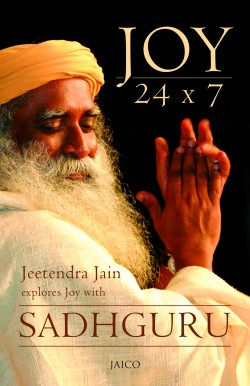
It’s probably safe to assume that everyone everywhere wants to be happy. What exactly “happiness” entails, however, is a bit murkier. Does happiness mean a large paycheck twice a month, a big house with nice cars, 2.3 children and a couple of pets, all encircled by a white picket fence? Should we throw in a boat and an RV for that occasional weekend trip to the lake? We do seem to get cultural messages that the accumulation of stuff should eventually lead to happiness, if only we can find the right stuff to buy. But does that strategy work? How wise is it to work on attaining happiness by trying to arrange our external circumstances exactly the way we want them?
In other words, do our current approaches to happiness work? Are they helping us to attain happiness, as many of us hope, once and for all? It’s not so clear. As Sadhguru suggests, “We are definitely the most comfortable generation ever on this planet. Is it so? Physically? But are we also the most joyful generation? So it’s not worked. Science and technology has brought enormous amount of comfort and convenience to our lives. Things we could not imagine just 25 years ago are just a living reality today, isn’t it? But are we any more joyful? No.”
Indeed, there is significant scientific evidence to suggest that we are not particularly happy. Rates of mental illnesses like depression and anxiety are increasingly high. Respected institutions such as the WHO and the Johns Hopkins school of medicine report that one in four Americans suffer from a diagnosable mental disorder each year, and these disorders are linked to increased likelihood of suicide. Additionally, depression is a leading cause of disability worldwide, negatively impacting the lives of millions upon millions of people. To attempt to cope with these problems, more and more people are coming to rely on prescription medications to help balance their emotional states. However, when we see high percentages of a population seeking such medications, might that not suggest that there is a broader cultural problem needing to be addressed?
So what does happiness really look like, and how might we get there?
Turning to the science of yoga offers highly potent solutions for problems of unhappiness. For instance, according to Sadhguru, “One simple thing is every human experience has a chemical basis to it. What you call as peace is one kind of chemistry, what you call as happiness or joy is another kind of chemistry. Ecstasy is one kind of chemistry, agony is another kind of chemistry, anxiety, another kind of chemistry, stress, another kind of chemistry. All levels of pleasantness and unpleasantness is rooted in a certain chemical background within you. Or in other words, what you call as this [referring to oneself] is a certain chemical soup. The question is only, are you a great soup or a lousy soup?”
Fortunately, there are some established recipes for great soup. Sadhguru: “Now, if I give soup making ingredients to ten different people, the same ingredients, ten people will not produce the same soup. Ten soups will taste in ten different ways though the ingredients are same. Similarly, all of us are made with the same ingredients, but see in how many different ways we have made ourselves. So it’s time to pay attention to soup making, that this [referring to oneself] is a great soup, this is not a lousy soup. If you establish a chemistry of blissfulness, that’s how you will be. This is what we’re teaching people. We are not advising people to be happy or peaceful. We are teaching them how to engineer your chemistry the way you want it. You create a chemistry of blissfulness, then why are you bothered about being happy? That’s how it’ll be.”
For more information about Inner Engineering and learning to make your experience one of “great soup,” click here.
Attend a free webinar to learn more about Inner Engineering and explore your highest potential through powerful processes of self transformation, distilled essence of classical yoga, meditations. Visit www.innerengineering.com/freeyoga




